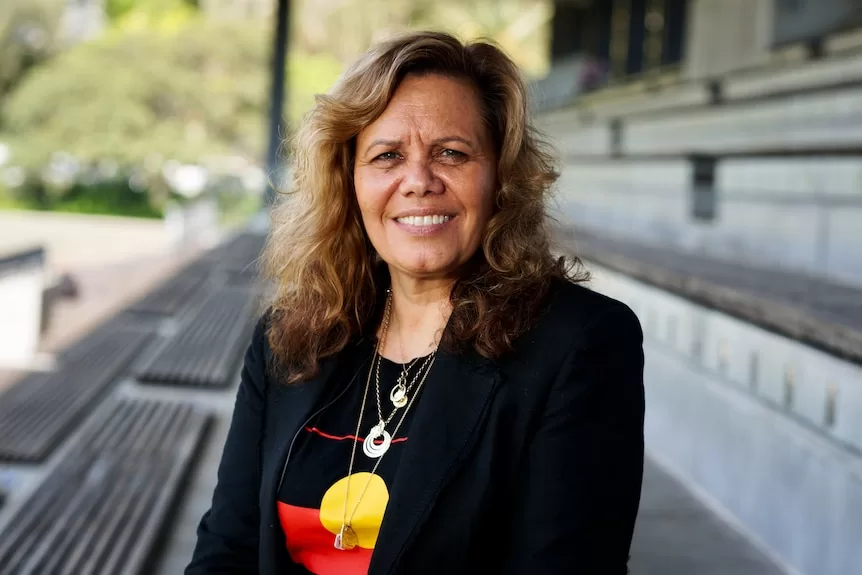The first Aboriginal councillor in the City of Sydney’s 180-year history has reignited calls for a review of the city’s colonial statues as part of a truth-telling push in the wake of the Voice referendum defeat.
Key points:
- There are 25 statues of the colony’s early leaders around Sydney CBD
- City of Sydney’s first Aboriginal councillor is putting a notice of motion on Monday for statues to be reviewed
- The mayor said the impact of colonisation was poignant in Sydney
There are 25 publicly-funded statues of the colony’s early leaders around Sydney CBD, including one of former NSW governor Lachlan Macquarie that was unveiled in 2013.
The plaque attached to Macquarie’s statue reads: “He was a perfect gentleman, a Christian and supreme legislator of the human heart”.
Wiradjuri woman Yvonne Weldon — elected to council in 2021 — said such plaques featured “inaccurate, misleading and offensive accounts of the feats of those commemorated”.
“Look at the devastation of what [Macquarie] did to First Nations people. In his own words he said ‘Aborigines need to be shot with their bodies hung from trees’,” Ms Weldon said.
“There’s nothing gentlemanly about that.”
Sydney needs to take the lead
Despite the national referendum defeat, Ms Weldon said the City of Sydney voted “overwhelmingly” in support of the Voice to Parliament — with some polling booths recording a more than 80 per cent Yes vote.
“Those numbers were absolutely heartwarming. So I think there are people that are really willing to roll up their sleeves and walk beside us,” she said.
Ms Weldon is now calling for a review of public statues in the city and for extra signage to provide an accurate description of the people commemorated.
She said it was an important time in the wake of the referendum to advance “truth-telling”, particularly in Sydney as the nation’s first site of British settlement.
“It started here. This global city that we live in will hopefully continue to shape the rest of the country.
“People come to this city for what they know about this city, but they also want to know more about the First Nations that have been here for over 65,000 years and when they walk around the city, they don’t see that and learn of that.”
The bronze statues have been at the centre of years-long debate, including during Black Lives Matter rallies which saw mounted police surrounding a Captain Cook statue in Hyde Park.
In 2017, that same statue was painted with slogans including “no pride in genocide” and “change the date”. The monument commemorating Governor Macquarie suffered a similar fate.
Then-prime minister Malcolm Turnbull claimed those responsible were trying to “obliterate” Australia’s history.
Reminder of ‘traumatic past’
But Bruce Scates, a leading historian with Australian National University, said many of the statues remain a “cruel affront” to First Nations people.
“I think in the wake of the referendum, we really need to find new ways forward,” Mr Scates said.
“What we have to do is embrace the other aspects of the Uluru Statement from the Heart, truth-telling and reconciliation, and one of the ways we can do that is by grappling with these symbols of a past that really does not serve Australia well today.
“These statues, as long as they remain there unchallenged, will be perpetuating racist ideas. They’re problematic statements.”
Professor Scates said the statues continued to remind First Nations people of a “deeply traumatic past” and needed further context and assessment — a process known as “dialogical memorialisation”.
This would involve adding plaques or other signage to existing monuments to explain history from a modern perspective.
“We can actually have a conversation with that statue, we can assess the claims that it makes historically, and can issue a new statement, one that acknowledges the enduring custodianship of Aboriginal and Torres Strait Islanders of their traditional lands,” he said.
‘They don’t tell our history’
Others including Professor Bronwyn Carlson, an Aboriginal woman and head of Macquarie University’s Department of Indigenous Studies, would prefer to see such statues removed altogether – arguing they reaffirmed a colonial myth that the country was peacefully settled.
“Statues are a version of history that somebody who has significant power to put that in prominent places to tell that story, so they actually don’t tell our history at all,” Ms Carlson said.
“People are holding onto these statues like they’re some part of them and I think there’s that fear that they’re going to lose something. But you’re not going to lose something from reflecting on the past and thinking about the future.”
Ms Weldon will put a notice of motion to the City of Sydney on Monday calling for a review of statues.
In a statement, Lord Mayor Clover Moore said the referendum loss was “devastating and tragic”, but that justice for First Nations people must continue.
She said the city was supporting the creation of public art projects and monuments that acknowledged events in Aboriginal history at key sites.
“The impact of colonisation is particularly poignant here in Sydney, the first site of invasion,” Ms Moore said.
“By acknowledging our shared past, we are laying the groundwork for a future which embraces all Australians — a future based on mutual respect and shared responsibility for this land.”
